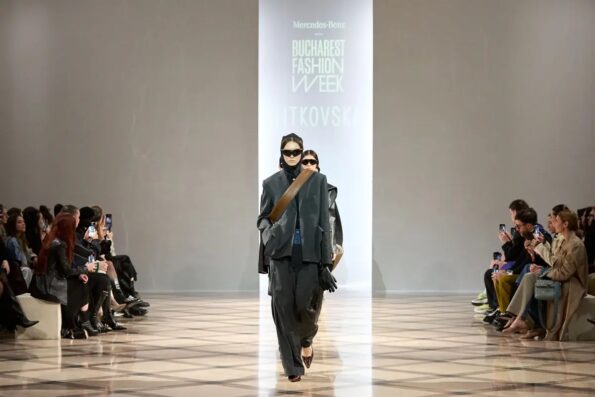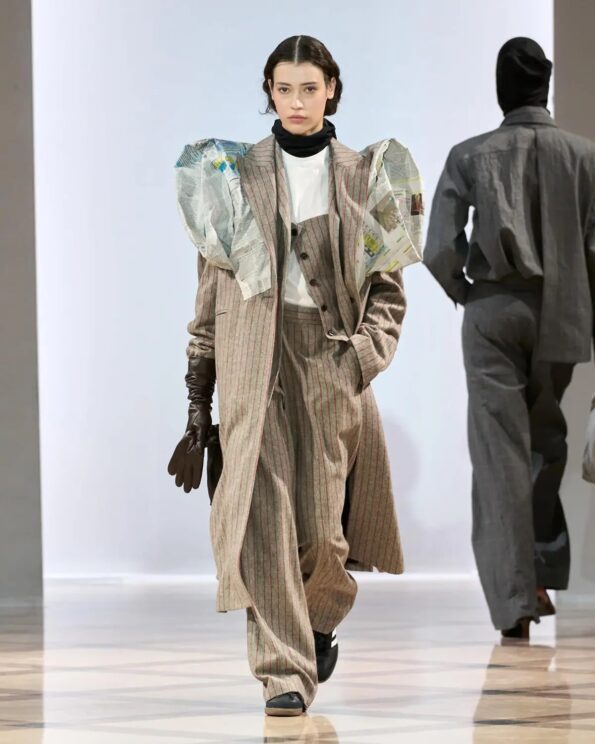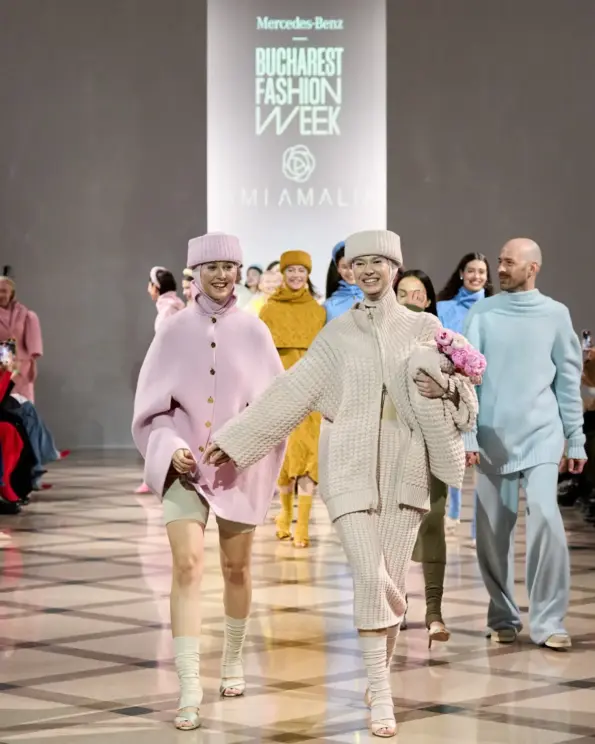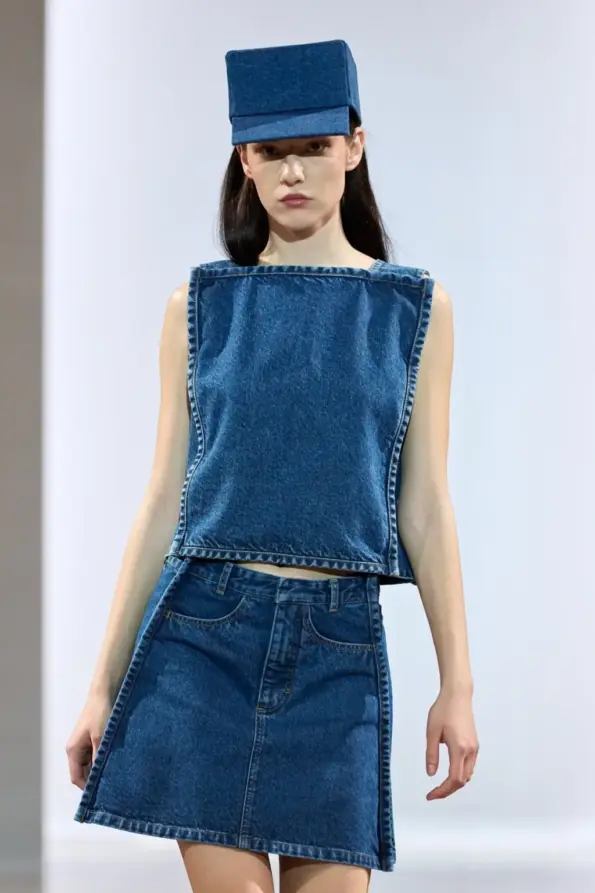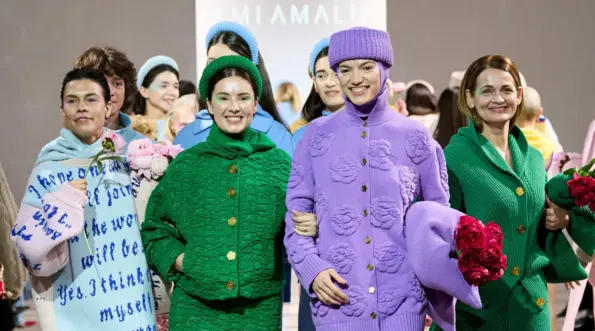
By Tina Lončar
I arrived in Bucharest shortly after midnight. The rain was pouring relentlessly, washing over the streets where the light from cars shimmered in the puddles. The city looked calm, poetic like Little Paris, with elegant architecture and the magical Arch of Triumph. Only the fences surrounding the government building hinted at the protests that had taken place there just hours earlier. Watching that scene in the darkness, my mind was filled with thoughts about everything happening around us today—from the awakening of people tired of unjust systems and a hopeless future, to merciless wars as the ultimate manifestation of humanity’s failure, to natural disasters and a seriously damaged ecosystem that we keep ignoring as if we have time to fix it. Even though our defense systems “get used to” the worst over time, the world we live in is an inseparable part of us—its pain touches and changes us.
That realization would be confirmed just two days later when the stories inspired by today’s world—its harsh reality, but also the hope for a better one like in John Lennon’s timeless anthem Imagine—began unfolding on the runway at Mercedes-Benz Bucharest Fashion Week. The deep imprint of our time on what we create speaks volumes about how strongly we feel it, and once again, fashion proved how deeply it is immersed in the zeitgeist, always ready to use its stage to tell important stories and send meaningful messages.
Although this is only the second season of Bucharest Fashion Week, collections by Romanian designers and those from neighboring countries like Ukraine, Hungary, and Moldova were carefully curated to offer fresh visions, aesthetic diversity, and a show that won’t be easily forgotten. This edition, co-founded by Roxana Voloșeniuc and Mario Antico, was built on three pillars: fashion, sustainability, and education—thinking long-term about the next generations. Most shows took place in the baroque Grand Hall of the National Museum of Art of Romania (MNAR), which added to the experience of the fashion stories. These are the ones that stood out the most to me.
Litkovska
When the first model walked down the runway carrying a leather bag with newspapers spilling out, it was clear that Lilia Litkovska had once again dedicated her collection to the impact of war on life in her native Ukraine. Since 2017, she’s been regularly presenting collections at Paris Fashion Week, where she opened an office due to the war, but Litkovska’s production remains in Kyiv. Her brand actively promotes Ukrainian fashion, supports the war-torn country, and spreads awareness about life in Ukraine through all aspects of its work.
Her Fall/Winter 2025 collection, 3 a.m. — traverse, presented earlier in Paris at the Saint-Ouen flea market with furniture wrapped in newspaper, tells a story of overcoming obstacles. Litkovska was inspired by an expedition to Kilimanjaro with Ukrainian soldiers—close friends whose courage deeply moved her. That resilience is woven into the aesthetic of the collection, reminiscent of gear meant to face extreme conditions. The pieces are full of military and outdoor references: a massive aviator coat made of lambskin, ski goggles, black balaclavas, and vests resembling winter uniforms. The brand’s signature redefined masculine silhouettes are present, with newspapers as a leitmotif—wrapping bags or woven into garments like blazers as unexpected details. These weren’t just avant-garde touches; the newspapers feature headlines from the past three years about the Russia-Ukraine war—carried by the designer wherever she goes, just like her clothes.
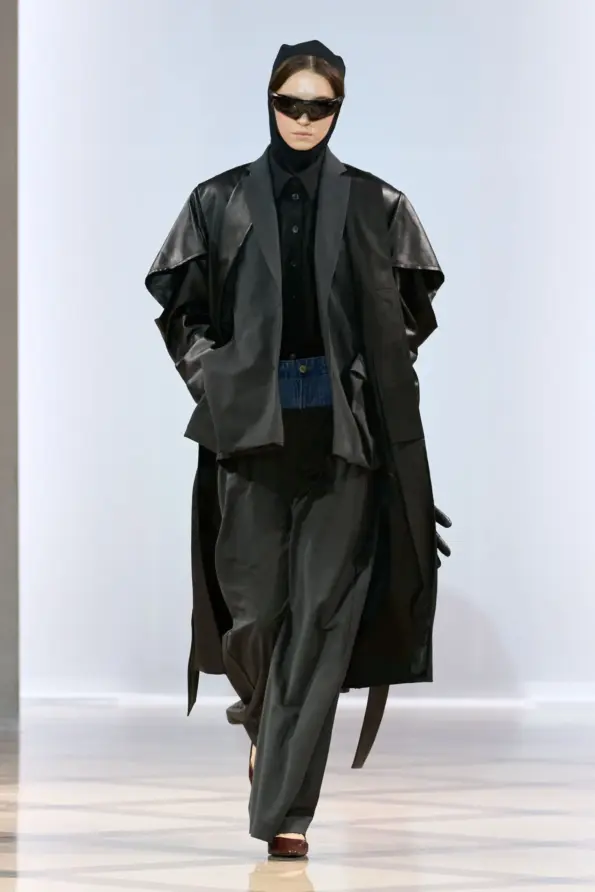
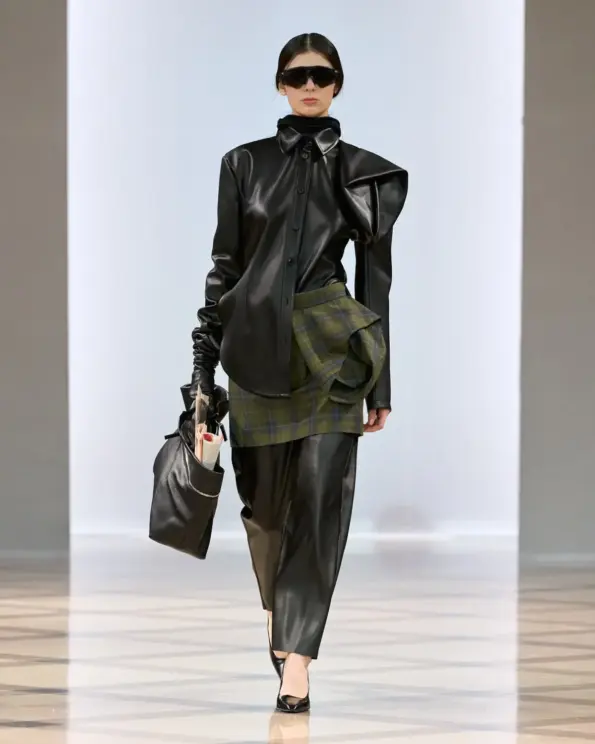
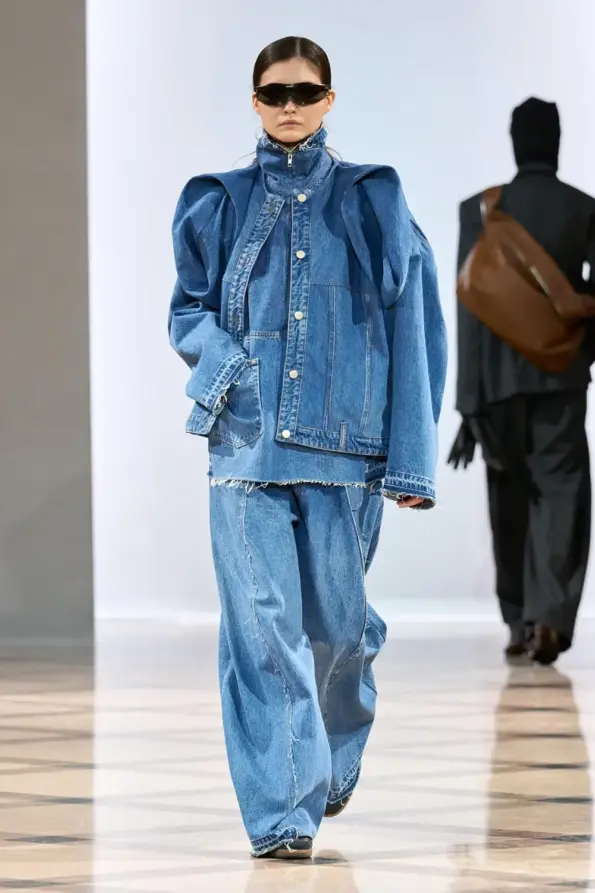
Ami Amalia
“The world needs people who smile”—a thought that came to me about a month ago when I first sat at a show by Romanian brand Ami Amalia in Budapest. Models smiled at the audience as they walked the runway in warm shades of red knitwear, and we smiled back. For a few minutes, we weren’t just spectators—we were part of creating a better world. But for her presentation in Bucharest, designer Amalia Săftoiu took this idea even further.
With a magical mix of colors, masterfully crafted knitwear in a variety of textures, charming retro references, and beautifully styled looks, the show already made a strong impression. But what etched it into my memory forever were the emotions of joy, empathy, and warmth it evoked. Models greeted each other, held hands, and hugged on the runway—reminding us of the world we want and sorely miss. To the tunes of Imagine and All You Need is Love—hymns for today’s times—models joyfully roamed the catwalk, waving at the audience. Amalia stripped away our masks and opened the door to repressed emotions, uniting us in a shared desire for a better world. I never thought I’d cry watching a fashion show, especially not without trying to hide it. But seeing people around me wiping away tears was enough to realize: all the wars, horrors, and injustices we’re surrounded by truly affect our souls. A hug, a smile, a simple handshake—tiny gestures of humanity—feel so distant today. Yet we are those people. We’ve just forgotten, amidst life’s harshness.
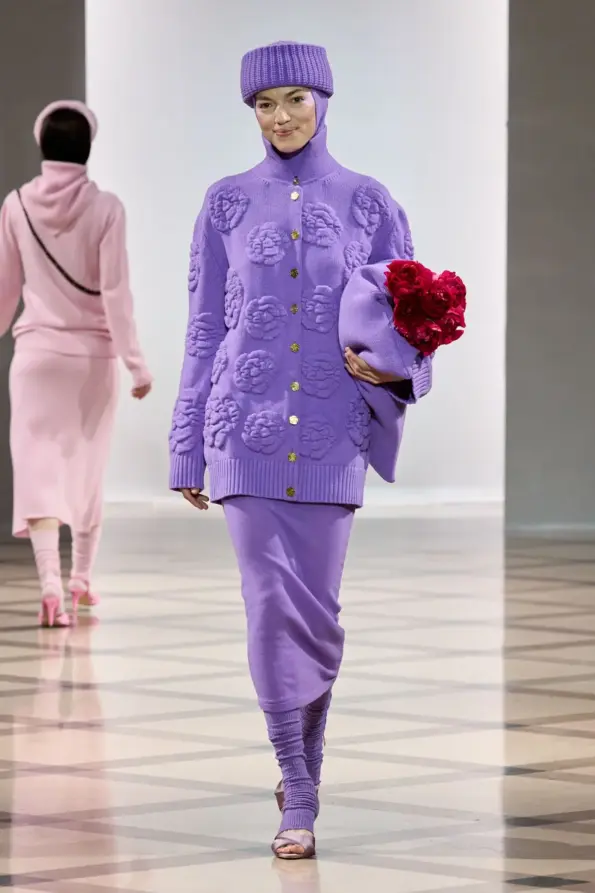
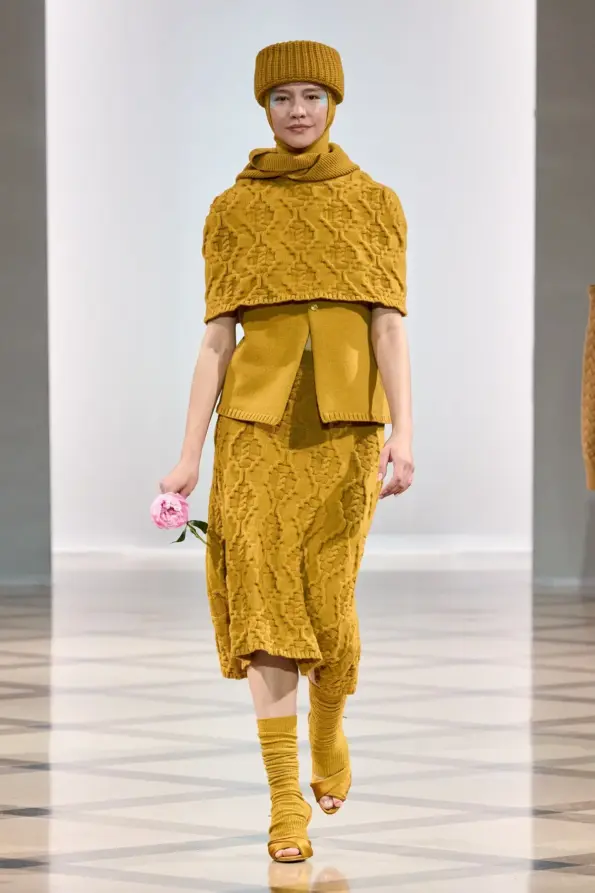
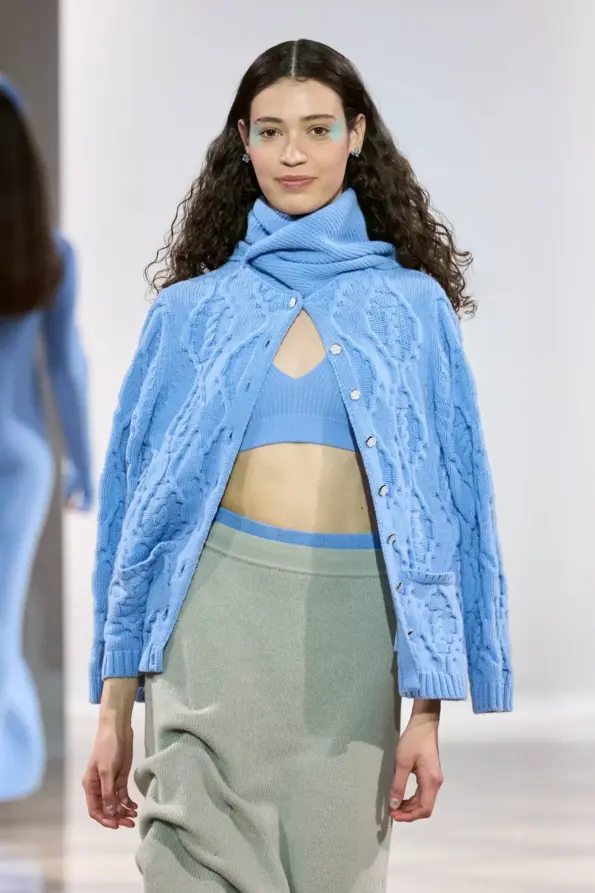
Kseniaschnaider
In a world where the fashion industry is one of the biggest polluters, sustainable practices and their implementation are essential changes that must happen—sooner rather than later. Brands that approach their work consciously and strive to minimize their impact on an already fragile ecosystem have made sustainability part of their DNA. One such brand is Ukrainian label Kseniaschnaider, founded in 2011 by husband and wife Ksenia and Anton Schnaider. “Our work is a fusion of art and responsibility. Every piece we make proves that sustainable fashion is possible,” says Anton.
Their production facilities are located in Ukraine and owned by the brand, allowing full control over all stages of production. In one month, Kseniaschnaider processes about 500 pairs of jeans. They’ve developed an innovative method of turning textile waste into “denim fur” and patchwork pieces—allowing them to recycle 200 kg of textile waste and 100 kg of vintage sportswear per season.
Upcycling methods and zero waste principles are deeply integrated into every step of their process. Denim plays a key role—it’s transformed into unexpected, playful pieces that prove how creative and imaginative upcycling can be. Their diverse denim collection was presented on the Bucharest runway, especially shining through Box Denim pieces shaped like boxes—completely transforming the usual pants silhouette. This box shape extended to skirts, jackets, and hats, visually showing what “out of the box” design thinking really looks like.
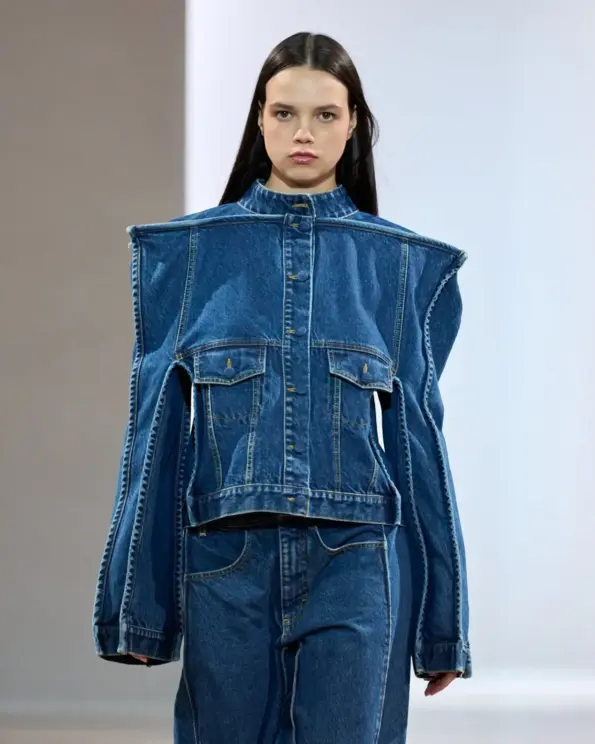
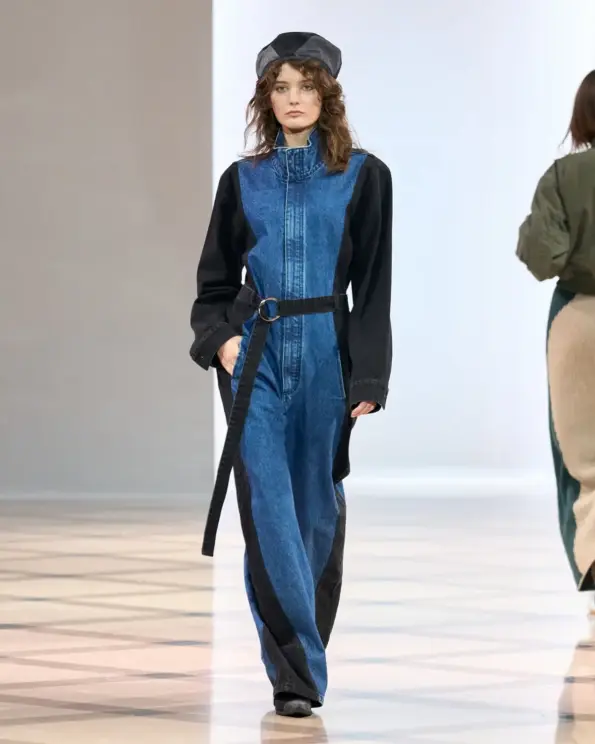
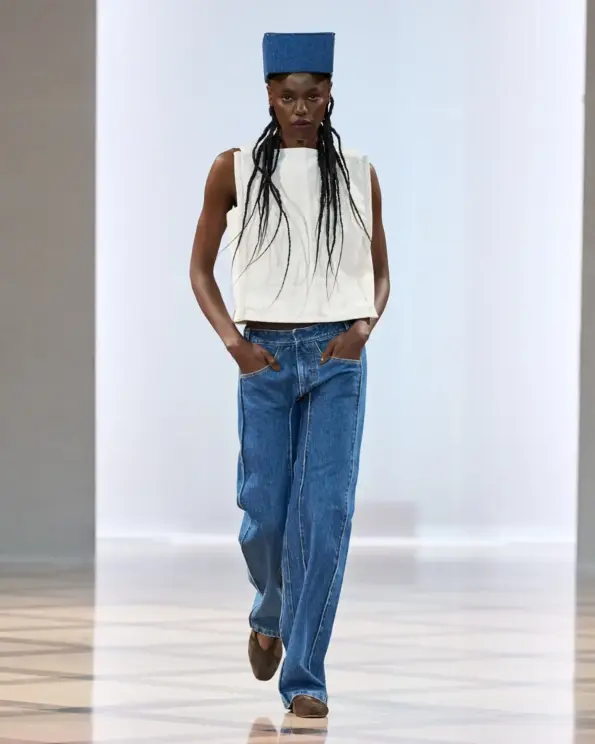
Carmen Secăreanu
Carmen Secăreanu is a Romanian fashion brand named after its founder, a designer and artist often described as one of the greatest visionaries in Romania’s fashion scene. She founded her brand in 2002, following slow fashion principles. Over more than two decades, she has left a significant mark on the Romanian fashion and art landscape.
Her instantly recognizable creations feature avant-garde elements, artistic sensitivity, innovation, fabric manipulation, and surprising combinations of textures. For her Fall/Winter 2025 vision, presented on the Bucharest runway, she showcased airy garments with ruffles resembling peculiar flowers. Each creation was meticulously detailed, with innovative tailoring and unexpected patterns—creating a collection you could revisit many times and always discover something new.
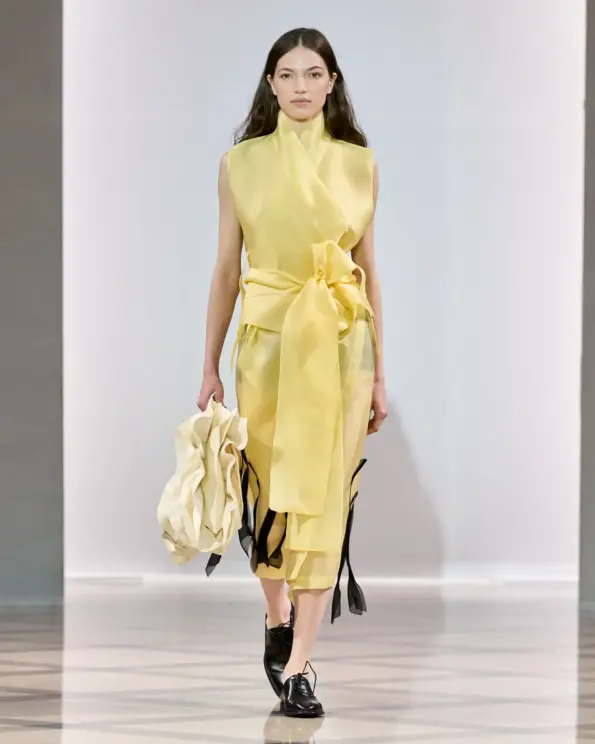
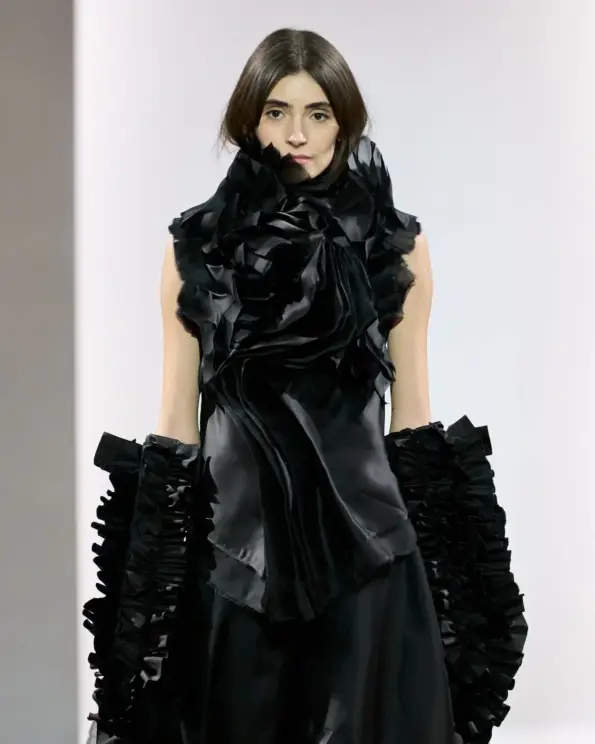
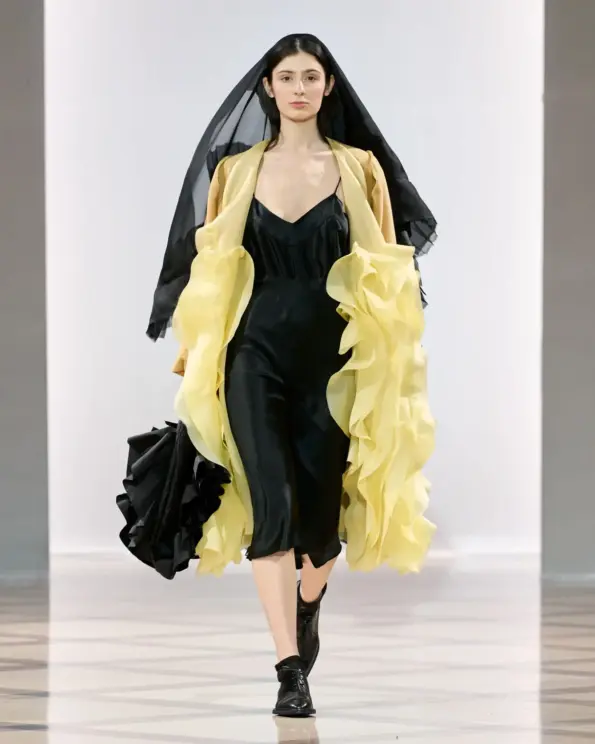
OK KINO
The collection by Moldovan brand OK KINO, led by Darya Golneva and Denis Caunov, proves just how complex minimalism can be. Though the pieces appear simple—with clean lines and monochrome tones—each is thoughtfully constructed to offer either an innovative solution, a surprising detail, or the ability for the wearer to transform it according to their needs. For example, a simple white dress with thin straps looks flat like a sheet of paper from the side, while a black one with buttons can be adjusted from an oversized silhouette to a classic fit.
Each piece is highly wearable and adaptable to various styles, making it a perfect foundation for a capsule wardrobe. Timeless in concept, yet far from boring or predictable in aesthetics. Their delicate knits show how carefully the brand chooses its materials—making OK KINO ideal for anyone who shops consciously and wants their clothes to last for years in both quality and style.
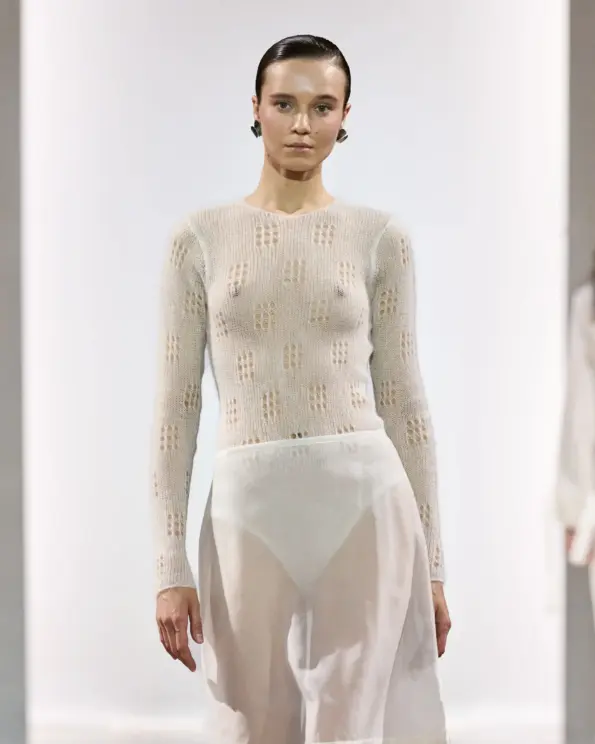
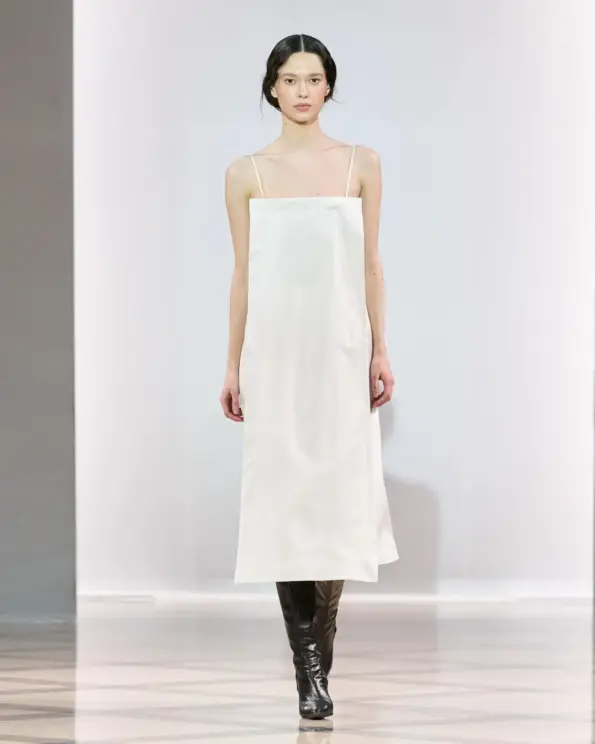
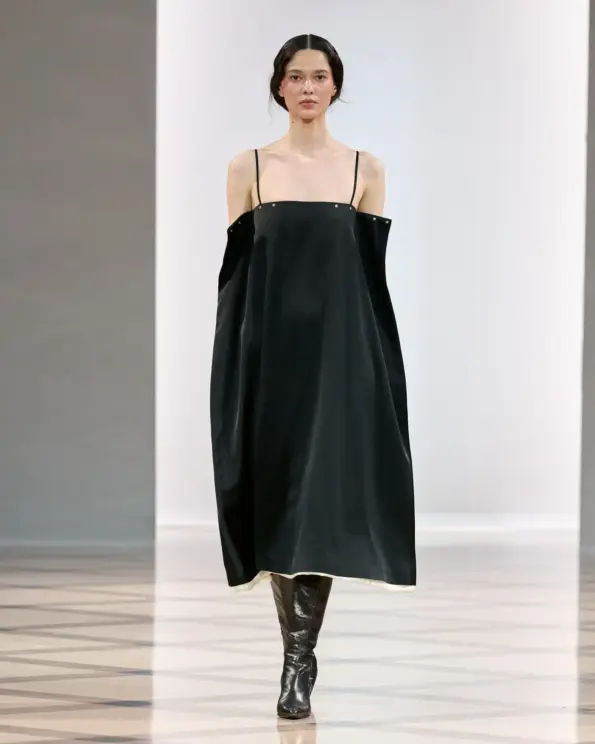
Photo: Daniele Schiavello
Original article:
Pista Bucharest Fashion Weeka je bila odgovor na svet, v katerem živimo – Vogue Adria

